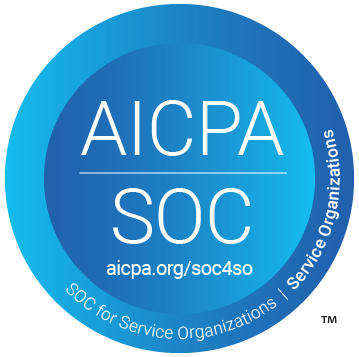CloudSecOps isn’t just another acronym floating around tech circles. It’s a response to what happens when cloud use grows faster than control.
One project lives on AWS, another moves to Azure, teams spin up containers for testing, and suddenly no one has the full picture. It may appear agile at first, but underlying gaps often emerge unexpectedly.
That’s the backdrop for CloudSecOps. Not a shiny tool, not an extra layer of approval, but a way of running cloud operations where security is built in from the start.
A misconfigured storage bucket? Automated checks can fix it before anyone notices. A new service rolled out overnight? Policies already follow it, instead of waiting for audits months later.
What makes this shift interesting is how normal it becomes once in place:
- developers maintain their agility;
- operations continue to scale on demand; and
- security evolves from a gatekeeper to an enabler of innovation.
In an era where a short outage or exposed API can hit customer trust, CloudSecOps turns into less of a trend and more of a quiet necessity. That’s why it’s being discussed in boardrooms as much as in IT stand-ups.
What is CloudSecOps?
CloudSecOps is the practice of joining cloud management and security operations into one process. At its core, it’s about embedding protection into the same workflows that build and scale infrastructure.
The difference compared to older approaches is striking. Instead of two separate teams working in sequence, CloudSecOps aligns their roles from the beginning.
A vulnerability doesn’t sit for weeks waiting for review — it gets flagged and fixed in the same cycle. That shared responsibility shrinks the window for mistakes and shortens the path from detection to resolution.
Think about how cloud environments actually operate: containers come and go, APIs expand, workloads move between regions. Each of those steps is a chance for exposure.
CloudSecOps deals with that churn directly. By pairing automation with policies, it ensures security isn’t bolted on but moves at the same speed as the business.
Why does CloudSecOps matter for modern businesses?
CloudSecOps matters because the cloud now sits at the center of daily business. It runs customer apps, processes payments, and stores sensitive data.
Yet the same cloud is also where missteps happen most often — an open database here, an overly broad access policy there. What seems like a small mistake can quickly turn into front-page news.
The value of CloudSecOps shows up in how it changes those outcomes. Continuous monitoring means strange activity gets flagged early instead of weeks later. Automated responses cut downtime from hours to minutes.
For a bank or a hospital, that difference protects not just information but the trust of the people they serve.
There’s also the question of compliance. Audits used to arrive like storms, forcing teams into long nights gathering evidence. With CloudSecOps, policies run in the background and reports update themselves.
Instead of panic, companies find themselves ready by default. And in markets where reputation is everything, that quiet assurance can be as important as the technology itself.
Key pillars of an effective CloudSecOps strategy
There isn’t a single recipe for CloudSecOps, but a few pillars show up in every effective program. Together, they explain how cloud environments can stay secure without slowing delivery.
Continuous monitoring and incident response
Cloud infrastructures never stand still, which makes continuous monitoring non-negotiable. Automated systems track behavior, flagging anything unusual — a sudden spike in outbound traffic, an unexpected login, a strange process running in a container.
Incident response plans connect those alerts to real actions, so the signal doesn’t get lost in the noise. Done well, this prevents small issues from becoming full-scale breaches.
Infrastructure as code (IaC) security
Infrastructure as code speeds deployment, but it also copies errors at scale. A misconfigured template written once could be launched dozens of times.
CloudSecOps addresses this by testing templates before they’re used. Security scans catch problems in the script itself, stopping flaws before they spread. It’s like proofreading code before it builds the house.
Secure CI/CD pipelines
CI/CD pipelines are built for speed, but speed without guardrails invites trouble. CloudSecOps adds checks directly inside the pipeline — scanning dependencies, containers, and code as they move forward.
Vulnerabilities don’t pile up until the end; they’re handled as part of the workflow. That way, developers keep their momentum, and production stays cleaner.
Identity and access management
In sprawling cloud environments, identity is the new perimeter. Identity and access management policies decide who can touch which resource, under which conditions.
Strong IAM applies least-privilege access, enforces multifactor authentication, and regularly reviews permissions. Without it, over-privileged accounts become open doors for attackers. With it, those doors stay locked unless explicitly needed.
Compliance automation
For industries that run on regulations, compliance is more than a checkbox — it’s survival. CloudSecOps automates compliance by baking standards like HIPAA or GDPR into daily operations.
Instead of scrambling for evidence once a year, reports are always up to date. The process shifts from reactive to routine, giving companies one less reason to panic before audits.
What’s the difference between CloudSecOps, DevSecOps and SecOps?
The names sound similar, but their focus is not:
- CloudSecOps secures cloud-native environments;
- DevSecOps brings security into the development process;
- SecOps covers the broader world of security operations across IT systems.
In practice:
- DevSecOps might run vulnerability scans during code builds;
- SecOps might handle phishing investigations or malware analysis in on-premises networks;
- CloudSecOps, however, deals with the moving parts of multi-cloud and containerized systems — resources that scale up and down, APIs that evolve daily.
For organizations, knowing the difference helps allocate attention. A company running legacy infrastructure will lean more on SecOps.
A software business rolling out new releases every week will emphasize DevSecOps. And for enterprises betting big on the cloud, CloudSecOps becomes the most urgent piece.
The future of CloudSecOps
Looking ahead, CloudSecOps is set to rely heavily on automation and AI. Machine Learning models are already being used to sift through endless logs, highlight anomalies, and rank which threats deserve immediate attention.
The goal isn’t to replace humans, but to reduce noise so teams focus on what matters.
Zero trust is another principle shaping the future. The idea that no request is trusted until proven legitimate fits neatly with CloudSecOps.
Every login, every connection, every call between services is verified, regardless of where it originates. That constant validation aligns with the distributed nature of cloud workforces.
Platforms are also consolidating. Instead of juggling ten tools, companies want a single pane of glass for monitoring, compliance, IAM, and response. The simplification helps teams stay efficient and reduces the chance of something slipping through the cracks.
The Ksquare Group’s role in enterprise CloudSecOps adoption
The Ksquare Group supports enterprises in making CloudSecOps part of everyday practice. Its Cloud Engineering services are built around a simple idea: security should move at the same pace as innovation. That means:
- automation to handle scale;
- policies that follow workloads wherever they go; and
- architectures designed to be both flexible and safe.
In real terms, that translates into:
- infrastructure defined as code;
- delivery pipelines that include security checks by default; and
- multi-cloud environments managed without losing sight of compliance.
Instead of treating protection as a hurdle, The Ksquare Group works with teams so it becomes part of their normal workflow. The goal isn’t to slow delivery — it’s to give organizations confidence that growth doesn’t come with hidden gaps.
For businesses planning to expand their use of the cloud, that reassurance is key. The Ksquare Group helps bring structure to complex environments and shows how CloudSecOps can scale with ambition.
If you are interested in these Cloud Engineering solutions, you can learn more directly through The Ksquare Group’s platform.
Summarizing
What is CloudSecOps?
CloudSecOps is the practice of combining cloud operations and security into one workflow. It uses automation, monitoring, and shared responsibility to keep dynamic cloud environments safe as they scale.
Are CloudOps and DevOps the same?
No. CloudOps focuses on managing cloud environments and ensuring they run smoothly, while DevOps integrates development and operations to deliver software faster. They complement each other but address different needs.
What exactly is cloud security?
Cloud security is the set of policies, controls, and technologies that protect data, applications, and infrastructure in the cloud. It covers areas like identity, compliance, and incident response to reduce risks.
image credits: Freepik



